Understanding Your Cat’s Anxiety: 8 Triggers And 8 Calming Tips
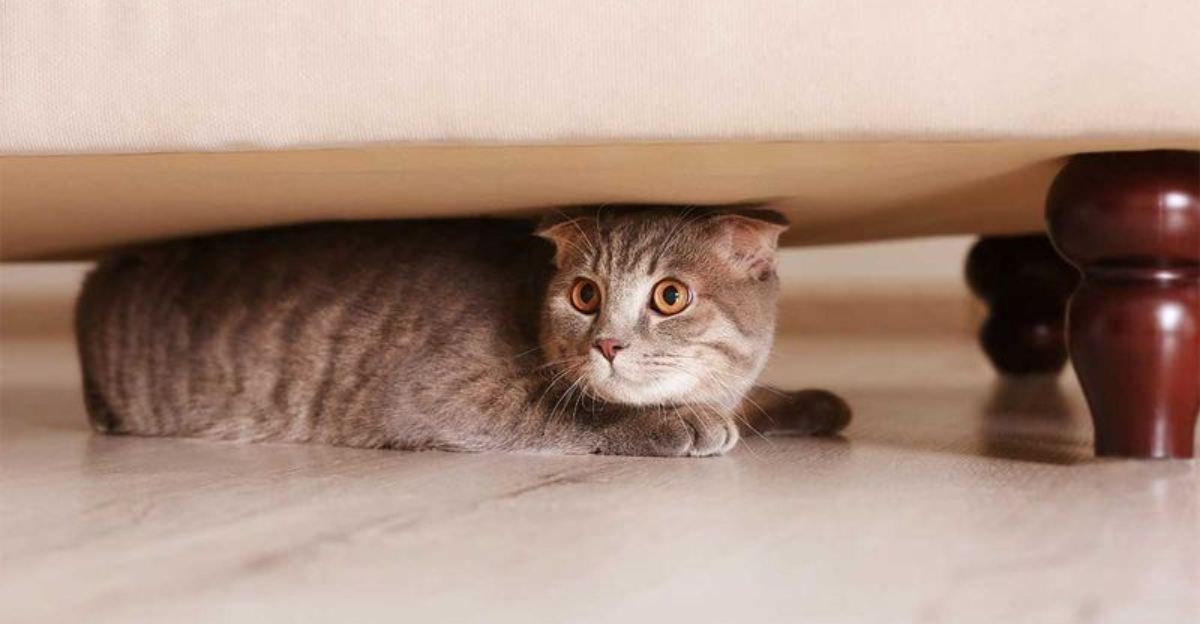
Ever noticed how your feline friend can switch from a purring cuddle machine to a ball of nerves in seconds?
It’s like they have a hidden button that activates their inner diva. But what’s really causing your kitty to turn into a furball of stress? Let’s explore some unexpected triggers and how to calm those twitchy whiskers.
1. Strangers In The House

Your home is your cat’s kingdom, and strangers are like an unexpected invasion. When new faces appear, your kitty might eye them suspiciously as if they’re plotting a heist.
It’s all about territory and trust. Cats are territorial creatures, and sudden changes can make them anxious.
Try introducing new people slowly, offering them treats as peace offerings. This way, your cat sees strangers as treat-bearing friends rather than intruders.
2. Changes In Routine

Cats are creatures of habit, and any change in their routine is like a plot twist in their daily script. Imagine expecting breakfast at 7 AM and suddenly it’s served at 9 AM instead.
Confusion and anxiety can set in. Maintaining a consistent routine with feeding and playtimes can help ease this stress. Think of it as keeping your cat’s daily soap opera uninterrupted and predictable.
3. Other Pets
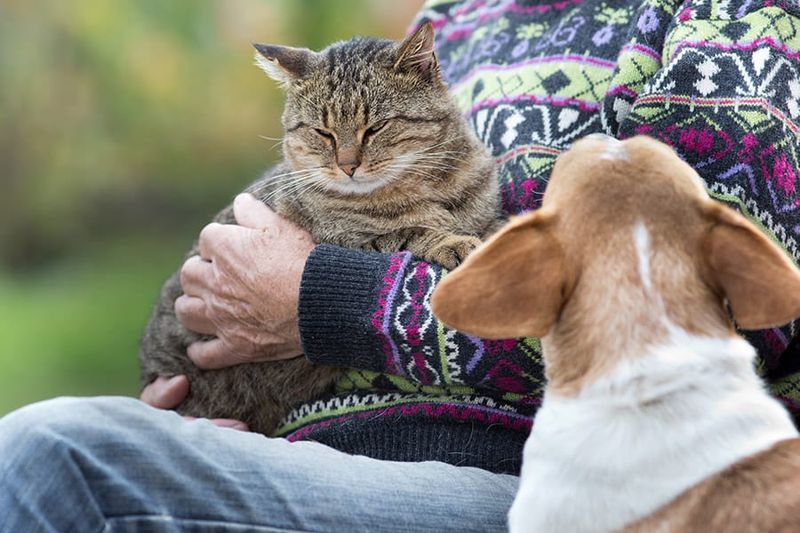
Adding a new pet to the family? Your cat might not be thrilled. It’s like bringing a new roommate into your personal space without asking.
Cats can feel threatened by other animals, leading to anxiety or jealousy. To help them coexist, introduce them gradually and supervise interactions.
Let your cat have safe zones where they can escape if the new friend becomes too much to handle. Patience is key here!
4. Traveling
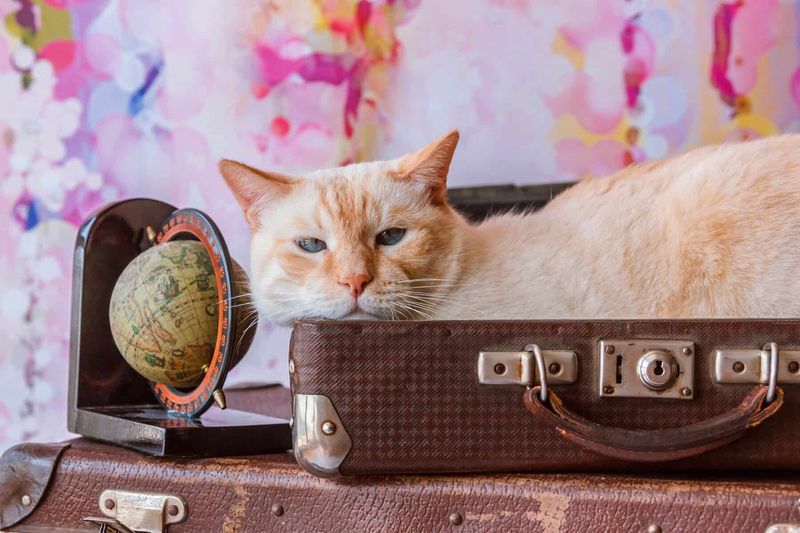
Who said traveling is fun for everyone? Certainly not your cat! While you might savor the adventure, your feline friend might see only confusion and chaos.
Cats prefer the comfort of their own territory, and a travel carrier feels more like a jail than a cozy nook.
To ease their anxiety, keep the carrier open at home, allowing them to explore and associate it with safety rather than stress.
5. Lack Of Stimulation
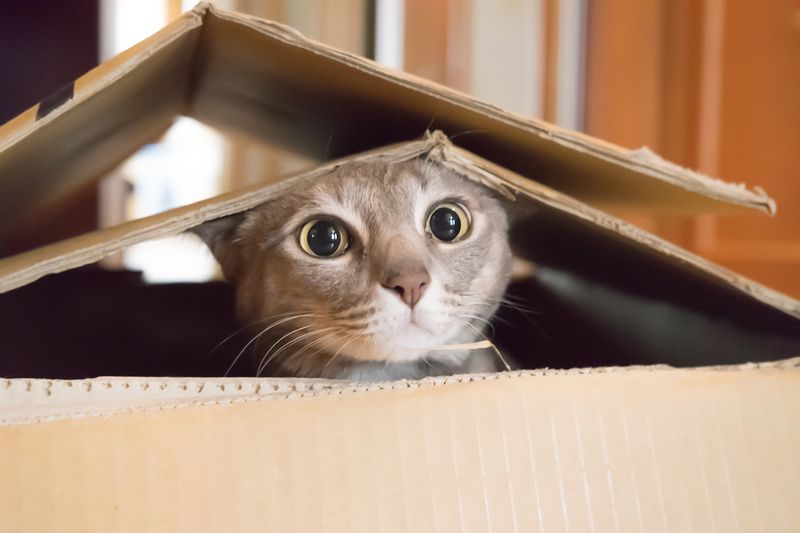
A bored cat is like a teenager without a phone—restless and irritable. Without mental stimulation, your cat can become anxious or engage in destructive behavior.
Providing toys, climbing trees, or interactive play can keep them entertained. Think of it as setting up a mini amusement park for your cat.
A happy, stimulated cat is a calm cat. Get creative and watch them transform into joyful purring machines.
6. Loud Noises

Imagine having super-sensitive ears and suddenly hearing a vacuum roar to life. That’s your cat when loud noises hit. Cats have a keen sense of hearing, much like a superhero with extra-sensitive powers.
But unlike a caped crusader, they can’t fly away. Instead, they might dash under the couch, thinking it’s the end of the world.
To help, try creating a quiet sanctuary where your cat can retreat, away from the noise and hullabaloo.
7. Separation Anxiety
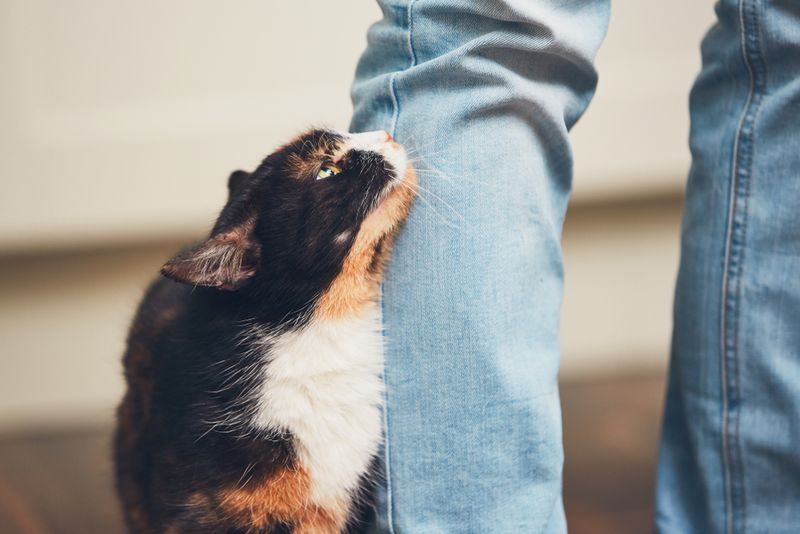
Separation anxiety isn’t just for humans; cats can feel it too! When you leave, your cat might feel like the world is ending.
They’re not being melodramatic; they’re just attached. Creating a comforting environment with familiar scents and leaving a piece of clothing with your scent can help.
Plus, some soothing background music might turn their blues into a relaxing solo jam session.
8. Medical Issues

Sometimes, anxiety is more than just nerves. Medical issues can cause discomfort, leading to anxious behavior.
Cats can’t tell you what’s wrong, so they express it through actions. Regular vet check-ups ensure that underlying health problems aren’t the culprits behind their anxiety.
Think of it as decoding their silent cries for help. If your furry friend is acting out of character, don’t hesitate to consult a vet.
9. Provide A Safe Space
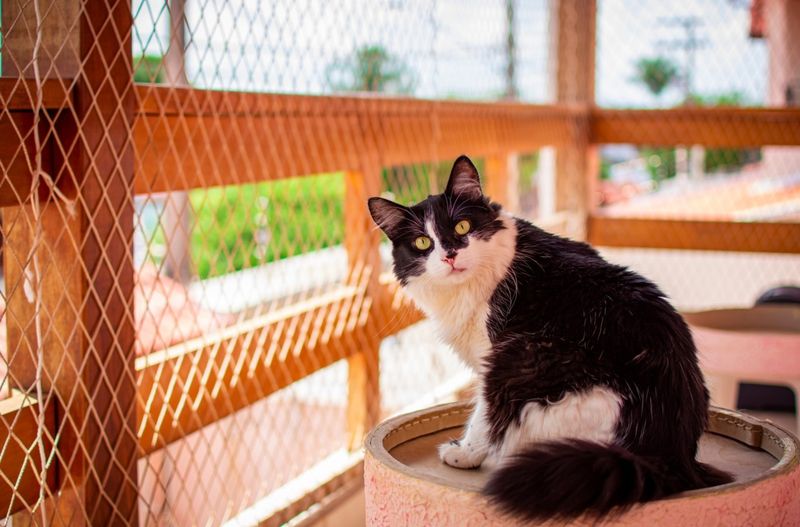
Every cat needs a secret hideout – a place to escape the chaos of the world. Creating a safe space for your cat is like building them a tiny fortress of solitude.
Add a soft bed, some toys, and a blanket, and you’ve got the perfect cat sanctuary. It’s their personal retreat, where they can recharge and find solace.
A calm cat is a happy cat, and a happy cat makes for a peaceful home.
10. Use Calming Music

Who knew cats could be music lovers? Soft, calming music can work wonders on an anxious kitty. It’s like a spa day for their ears, soothing them into a state of zen. Play gentle tunes when you notice signs of stress. You’ll soon find them lounging with ears perked, vibing to the rhythm. It’s a simple yet effective way to keep your feline friend relaxed and purring with contentment.
11. Interactive Play Sessions
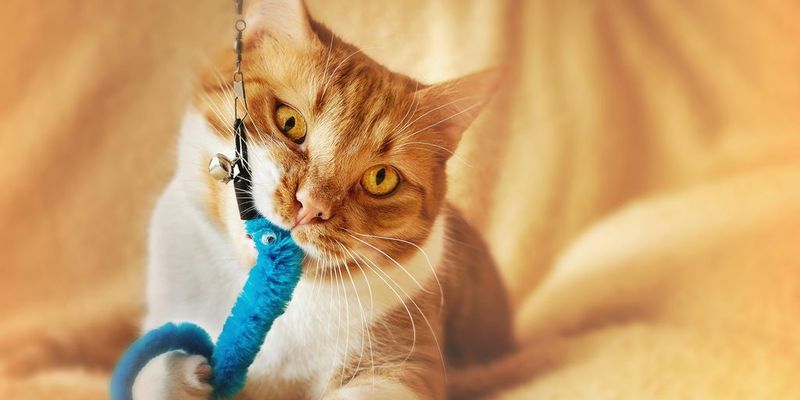
Cats love a good play session, and it’s more than just fun—it’s therapy. Interactive play helps burn off energy and soothes anxious nerves. It’s like a workout for their mind and body.
Grab a feather toy or laser pointer and watch your cat transform into a nimble hunter. Just a few minutes a day can make a huge difference in their anxiety levels, turning tension into tail-wagging happiness.
12. Aromatherapy For Cats
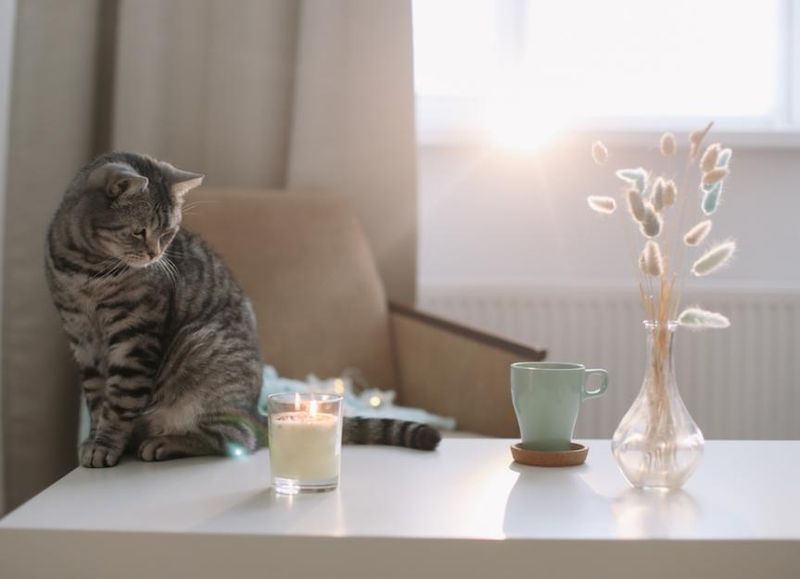
Aromatherapy isn’t just for humans. Cats can benefit from it too! Certain scents like lavender and chamomile have calming effects.
Just add a few drops to a diffuser, and you’ve created a tranquil oasis for your kitty. It’s like a gentle hug from Mother Nature, wrapping them in serenity.
Just ensure the scents are safe for cats, as some essential oils can be harmful. Always do your research first.
13. Comforting Pheromones
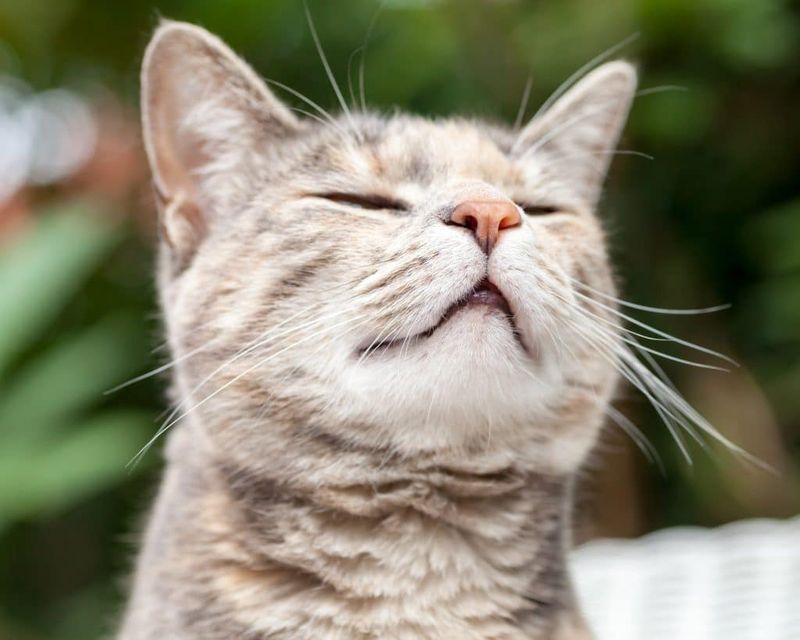
Cats communicate through scent, and comforting pheromones can signal safety and calm. Products that mimic these natural signals can ease tension.
It’s like an invisible hug, reassuring them that everything’s okay. You can find sprays or diffusers that emit these calming scents, transforming your home into a stress-free zone.
Think of it as installing an emotional comfort blanket in your kitty’s environment.
14. Provide Regular Grooming
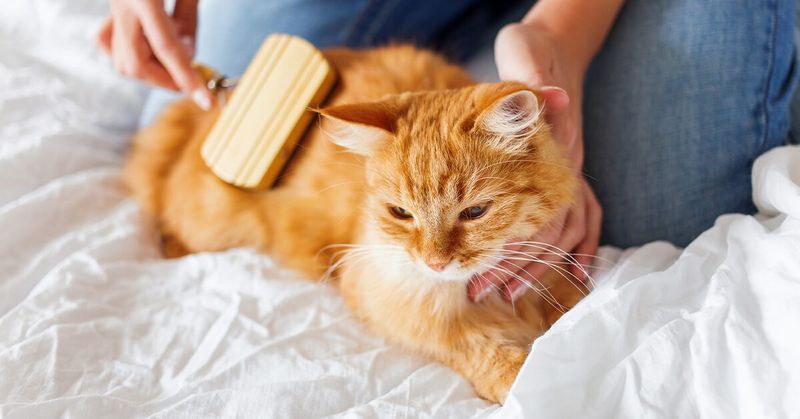
Grooming isn’t just about looking good; it’s about feeling good too. Regular brushing can be a soothing ritual for your cat, similar to a relaxing massage.
It helps remove loose fur and reduces stress. Plus, it strengthens the bond between you and your furry friend.
Make grooming a part of your routine, and watch your cat bask in the attention. It’s pampering with a purpose, leaving your kitty purring with delight.
15. Establish A Feeding Routine

Cats love predictability, and a consistent feeding routine is like a well-rehearsed symphony to their daily life. Knowing when the next meal is coming provides comfort and stability. It’s like setting their internal clock to tick with precision. Stick to specific feeding times, and your cat will feel secure and content. A full belly and a scheduled day are powerful tools against anxiety.
16. Offer Social Time
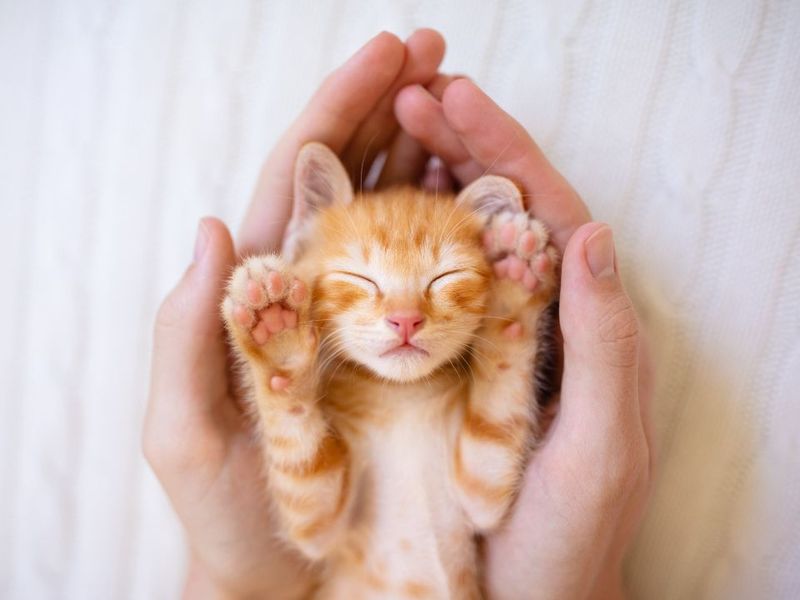
Cats may seem aloof, but they crave social time too! Spending quality moments with your feline friend can ease anxiety.
It’s like sharing a cozy chat with a friend over tea. Offer attention, petting, or simply sit close by. Your presence provides reassurance and comfort.
Recognize their signals and respect their space, but make room for those bonding moments. It’s a simple yet profound way to show love and alleviate stress.






